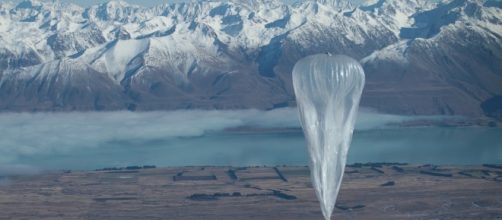Google's parent company, Alphabet, has launched the balloon-powered internet Project Loon' in hurricane-hit Puerto Rico to reinstate mobile data services for LTE phones (Long Term Evolution) on the island allowing residents to send and receive text messages and to also access the internet.
How does Project Loon work?
The Project Loon balloons beam signals between themselves in the air and to the ground for users like cell towers do. This establishes communication networks in places that have damaged, little or no infrastructure. The balloons are solar powered and when the sun goes down, the balloons use stored battery power instead.
As wind plays a very important role in ensuring that the balloons stay in their designated area, the balloons have pumps on board to move them up or down. More recent models use a software algorithm to determine wind patterns at different altitudes so that the balloons can have the best chance of staying in the area of where they are supposed to be.
Alphabet launched the project in partnership with the government of Puerto Rico, the telecommunications company AT&T, the Federal Emergency Management Agency, the Federal Communications Commission (FCC) and the Federal Aviation Administration. According to the FCC, up to 30 balloons can fly in Puerto Rico.
Going forward with Project Loon
More than 68 percent of the island's cell sites remain out of service according to the Federal Communications Commission.
So alternative technologies are being sought to temporarily solve this problem. In some areas of Puerto Rico, temporary satellite-based cell sites are serving users in these locations.
While Project Loon is still in its experimental stage, it has already proved effective in flooded Peru earlier this year and the goal for Loon in Puerto Rico is to reach the hardest of areas on the island.
The road to recovery for Puerto Rico
Hurricane Maria hit Puerto Rico a month ago on September 20, 2017, the damage it caused and left in its wake is colossal. Most of the island still has no access to electricity and it's no simple task to restore power on the island because of its outdated power grid. In addition, Puerto Ricans are facing dim job prospects - before Maria, the island was suffering from an unemployment rate of 10 percent and an exodus of young employees, according to the Puerto Rican government.
They have no running water, they are queuing for food and jobless benefits while others are simply leaving the island.
77% of #PuertoRico is still without power more than a month after Hurricane Maria. Unbelievable. Imagine starting your week like this!
— Mariana_Atencio (@marianaatencio) 23 October 2017
Also, a third of bank branches have yet to reopen on the island and as power remains down, banks cannot ensure the deliveries of monies and businesses can neither operate properly. To add to all of it, Donald Trump isn't giving the country much of his sympathy either.
In the long run, Puerto Rico's recovery is looking crippled and mountainous.
Why Hurricane Maria Was Such a Catastrophe in Puerto Rico https://t.co/97f9HwmsAv
— Puerto Rico 🇵🇷 (@PuertoRicoPUR) 19 October 2017


